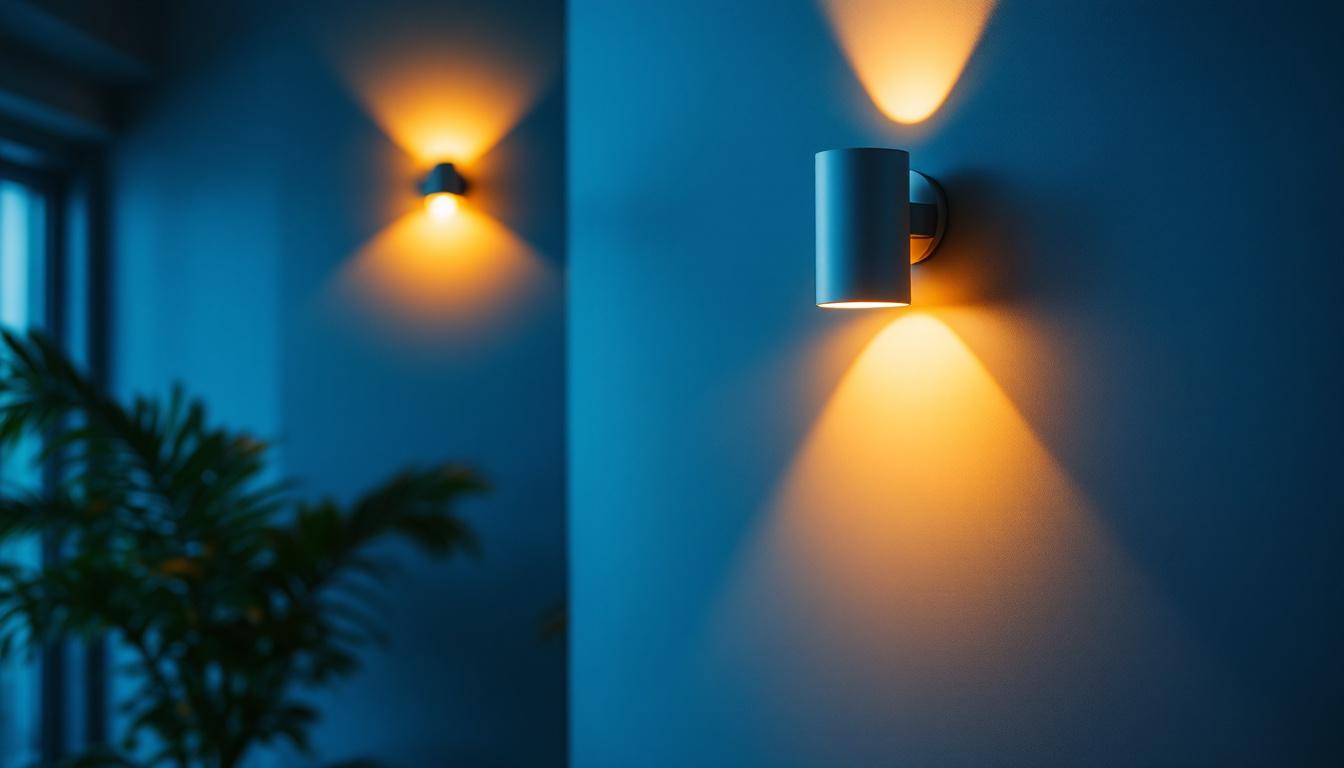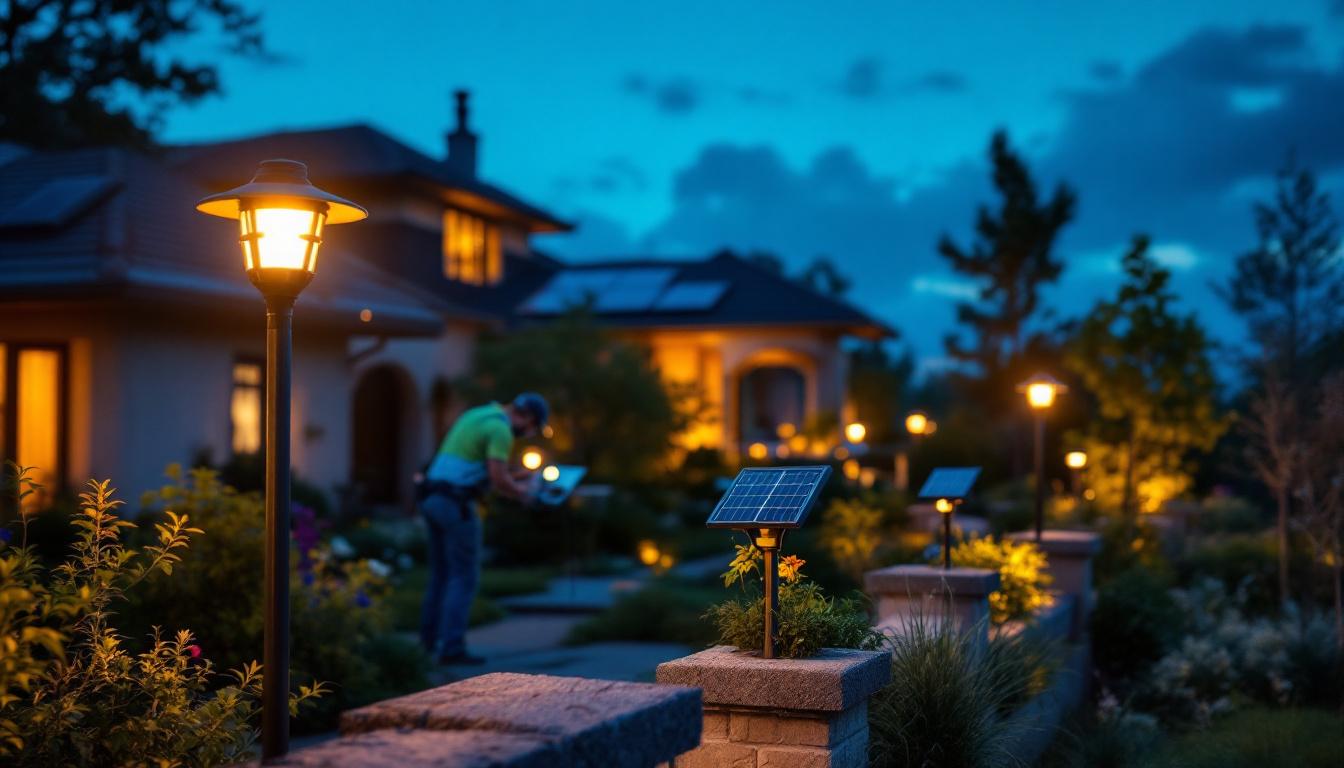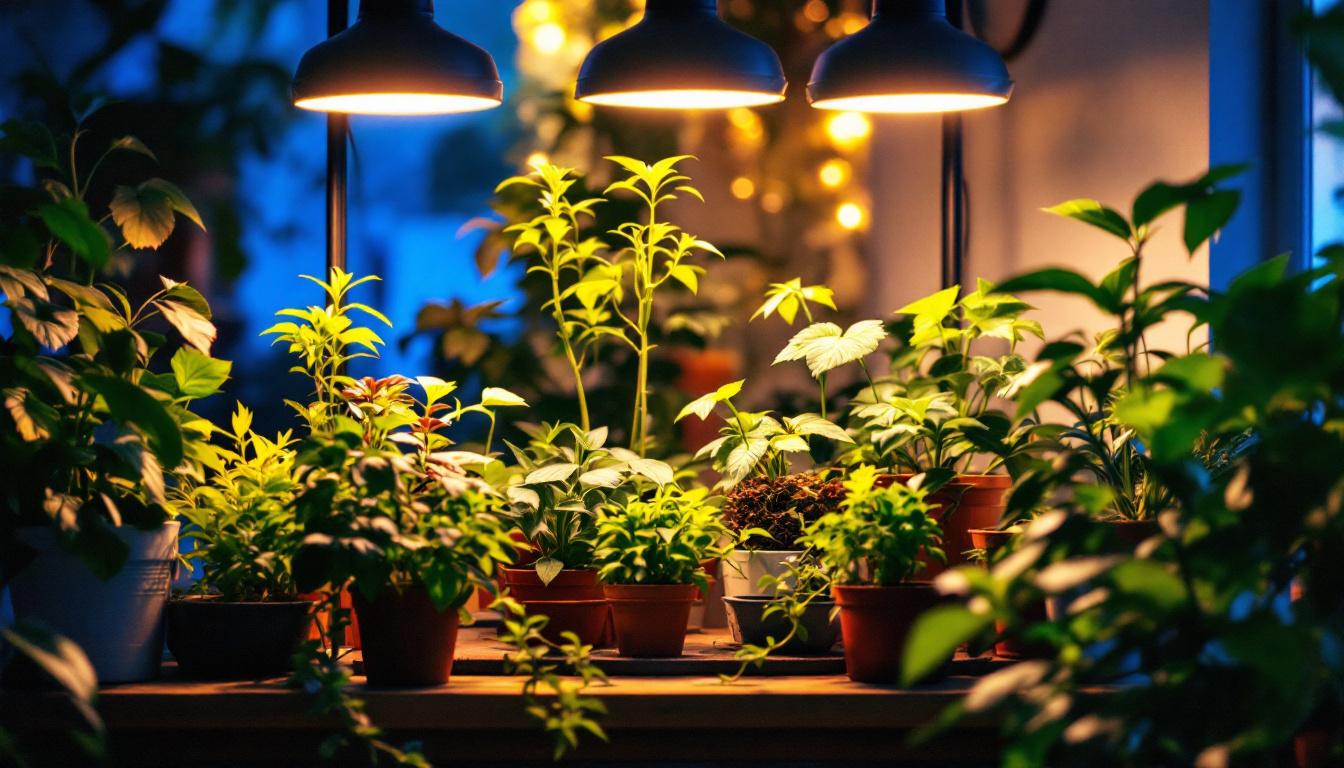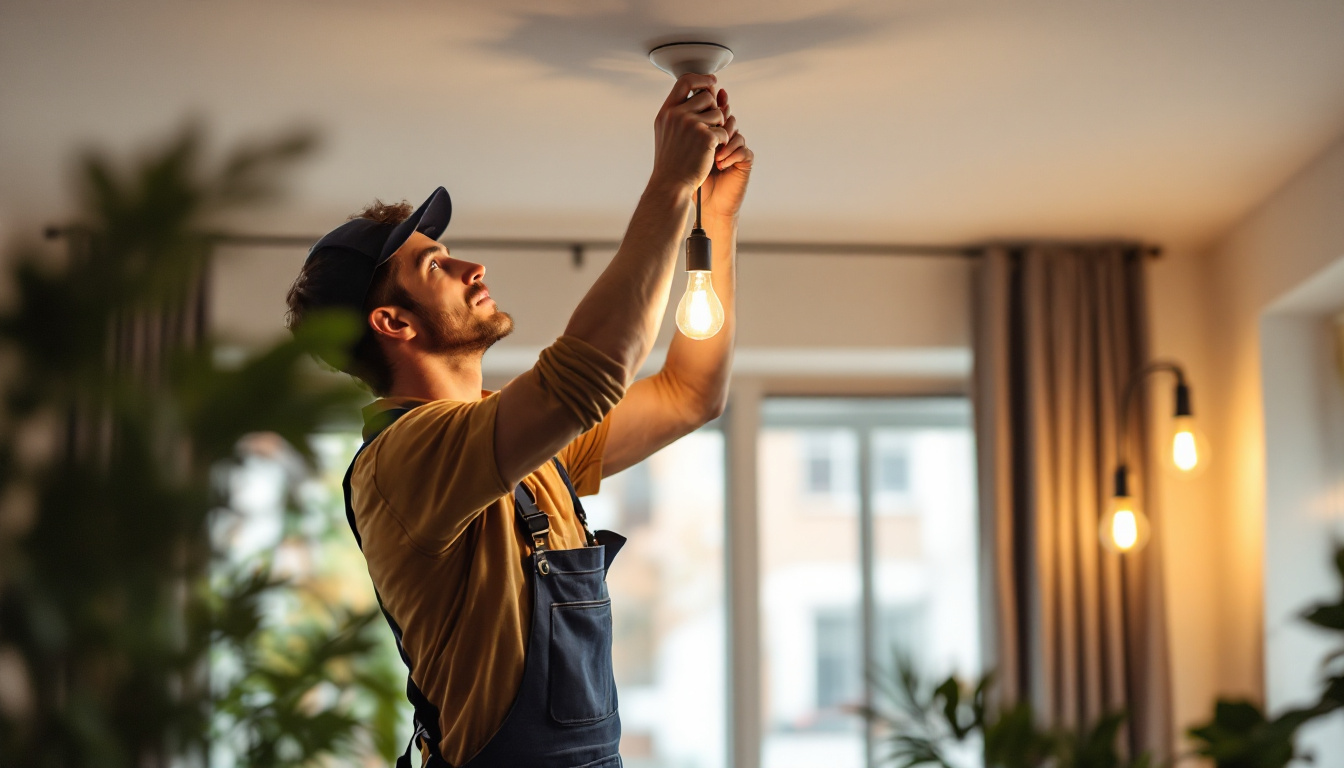
As a lighting contractor, ensuring that every project is completed to the highest standards requires meticulous planning and execution. One of the most critical aspects of your work involves not just the installation of light fixtures but also the way these fixtures interact with the surrounding environment. This article serves as a comprehensive checklist designed to guide lighting contractors through the essential steps and considerations when working on projects that involve wall lighting.
Wall lighting serves multiple purposes, from enhancing aesthetics to providing functional illumination. It can transform a space, highlight architectural features, and create ambiance. Before diving into installation, it’s crucial to grasp the fundamentals of wall lighting.
Wall lighting can be categorized into various types, including sconces, wall-mounted fixtures, and recessed lighting. Each type serves a unique function and can influence the overall design of a room. Understanding these roles will help in selecting the right fixtures for your project.
For instance, sconces can provide both ambient and task lighting, while recessed fixtures are excellent for creating a clean, modern look. Knowing how to balance these different types of lighting is essential for achieving the desired effect. Moreover, wall lighting can also be used to accentuate artwork or decorative elements, drawing the eye to specific areas of a room and adding depth to the overall design. This versatility makes wall lighting an invaluable tool in interior design, allowing homeowners to express their personal style while ensuring functionality.
The placement of wall lighting is critical for maximizing its effectiveness. Factors such as height, spacing, and proximity to other light sources must be considered. Generally, wall sconces should be installed at eye level, around 60 to 66 inches from the floor, to ensure optimal illumination.
Additionally, spacing between fixtures should be consistent to maintain a cohesive look. A common rule of thumb is to place sconces about 6 to 8 feet apart, depending on the room size and the effect desired. It’s also important to consider the room’s function when determining placement; for example, in a hallway, fixtures should be spaced to provide even lighting, while in a living room, they might be strategically positioned to create cozy reading nooks or highlight a particular piece of furniture. Furthermore, dimmable wall fixtures can enhance versatility, allowing you to adjust the brightness based on the time of day or the mood you wish to create, making your space feel more inviting and adaptable to various activities.
Equipping yourself with the right tools is fundamental for any lighting installation. The following list outlines the essential tools every lighting contractor should have on hand when working with wall lighting.
A reliable set of hand tools is a must. This includes screwdrivers, pliers, wire strippers, and a voltage tester. Each tool plays a vital role in ensuring that installations are safe and secure.
For instance, a voltage tester is crucial for confirming that power is off before beginning any electrical work. This simple step can prevent accidents and ensure the safety of both the contractor and the homeowner. Additionally, having a good quality set of screwdrivers, including both flat-head and Phillips, allows for versatility in tackling various screw types found in different fixtures. Pliers are equally important, as they can be used for gripping, twisting, and cutting wires, making them indispensable for any electrical task.
Power tools can significantly speed up the installation process. A cordless drill is particularly useful for making holes in walls for fixtures and running wiring. Additionally, a stud finder can help locate the best spots for mounting fixtures securely.
Investing in quality power tools can enhance efficiency and precision, which are key to successful installations. For example, a laser level can ensure that fixtures are perfectly aligned, providing a professional finish that is both aesthetically pleasing and functional. Furthermore, a reciprocating saw can be beneficial for cutting through drywall or other materials when modifications are needed, allowing for a seamless integration of lighting fixtures into existing structures. The right combination of power tools not only saves time but also elevates the overall quality of the work performed.
Safety should always be the top priority when working with electrical installations. Understanding electrical codes and regulations is essential for compliance and safety.
Each region has specific electrical codes that must be followed during installations. Familiarizing yourself with these codes is crucial to avoid fines and ensure the safety of the installation. Consulting local code books or online resources can provide valuable guidance.
Moreover, it’s advisable to obtain any necessary permits before starting work. This not only ensures compliance but also protects the contractor from potential liabilities. Local authorities often have resources available, such as workshops or seminars, that can help contractors stay updated on changes in the codes. Engaging with these resources can enhance your understanding and application of the regulations, ensuring that your work meets the highest standards of safety and professionalism.
Using the correct wiring techniques is essential for a safe and effective installation. This includes using the right gauge wire for the fixtures being installed and ensuring all connections are secure. Loose connections can lead to overheating and pose a fire hazard.
Additionally, always use wire nuts to secure connections and electrical tape to provide extra insulation. These small details can make a significant difference in the safety and longevity of the installation. It’s also important to consider the environment where the wiring will be installed; for instance, outdoor installations may require weather-resistant materials and additional protective measures against moisture and pests. Understanding the specific conditions of the installation site can help in selecting the most appropriate materials and techniques, ultimately enhancing the durability and safety of the electrical system.
With countless lighting options available, selecting the right fixtures for a project can be overwhelming. However, understanding the various factors involved can simplify the decision-making process.
The style of the fixtures should complement the overall design of the space. Whether the project leans toward modern, traditional, or eclectic, the selected fixtures should enhance the room’s aesthetic without overwhelming it.
Consider the material, color, and shape of the fixtures. For example, a sleek metal sconce may work well in a contemporary setting, while a vintage-style fixture might suit a more traditional space.
In today’s environmentally conscious world, energy efficiency is a significant consideration. Opting for LED fixtures not only reduces energy consumption but also offers longer lifespans compared to traditional bulbs.
Additionally, many LED fixtures come with adjustable brightness and color temperature options, allowing for greater flexibility in achieving the desired ambiance.
Once the planning and preparation stages are complete, it’s time to move on to the installation process. Following a systematic approach can help ensure that everything goes smoothly.
Before starting the installation, gather all necessary tools and materials. Clear the work area to ensure safety and efficiency. It’s also advisable to turn off the power at the circuit breaker to prevent any electrical accidents.
Next, mark the locations where the fixtures will be installed. Use a level to ensure that the markings are straight, especially for multiple fixtures that need to align.
Begin the wiring process by running the appropriate gauge wire from the power source to the fixture locations. Make sure to follow local codes and safety guidelines during this step.
Once the wiring is in place, mount the fixtures securely to the wall. Use anchors if necessary, especially in drywall installations, to ensure that the fixtures can bear the weight and remain stable.
After mounting the fixtures, connect the wiring according to the manufacturer’s instructions. Double-check all connections and ensure that the fixture is securely attached to the wall.
Finally, restore power at the circuit breaker and test the fixtures to ensure they are functioning correctly. If everything is in order, complete any final adjustments to the positioning of the fixtures for optimal light distribution.
Once the installation is complete, there are several post-installation considerations that should not be overlooked. These steps can help ensure customer satisfaction and the longevity of the installation.
Cleaning the fixtures and surrounding areas is essential for a polished final look. Dust and debris can detract from the beauty of newly installed lighting. A gentle wipe with a microfiber cloth can help maintain the fixtures’ appearance.
Additionally, discussing maintenance with the client is crucial. Educating them on how to care for their new lighting can prolong its life and ensure continued satisfaction.
Following up with clients after the installation is a best practice that can enhance customer relationships. A simple call or email to check on their satisfaction with the work can go a long way in building trust and loyalty.
Moreover, this follow-up can provide an opportunity to address any concerns or questions they may have regarding the new lighting. A satisfied customer is likely to recommend services to others, leading to potential new business opportunities.
In conclusion, working as a lighting contractor requires a blend of technical knowledge, creativity, and attention to detail. By following this ultimate lighting contractor checklist, professionals can ensure that their wall lighting installations are not only aesthetically pleasing but also safe and efficient.
From understanding the basics of wall lighting to executing a flawless installation and maintaining client relationships, each step plays a crucial role in the overall success of a project. With the right tools, knowledge, and approach, lighting contractors can illuminate spaces beautifully and effectively.
Ready to elevate your lighting projects to new heights of excellence? At LumenWholesale, we provide lighting contractors like you with the highest quality, spec-grade lighting products at prices that can’t be beaten. Say goodbye to local distributor markups and hello to a vast selection of reliable, high-performance lighting that meets the most rigorous industry standards. Plus, with free shipping on bulk orders, you can stock up on premium lighting without worrying about hidden fees. Don’t compromise on quality or value—choose LumenWholesale for the perfect fusion of affordability and convenience. Start transforming your lighting projects today by visiting Wholesale Lighting at the Best Value.

Discover the ultimate guide for lighting contractors on solar lights, exploring innovative solutions, installation tips, and the latest trends in sustainable outdoor illumination.

Discover why professional grow lights are essential for thriving lighting projects.

Discover cost-effective strategies and expert tips for lighting contractors to enhance their projects without breaking the bank.

Discover why track lighting light fixtures are essential for any successful lighting project.